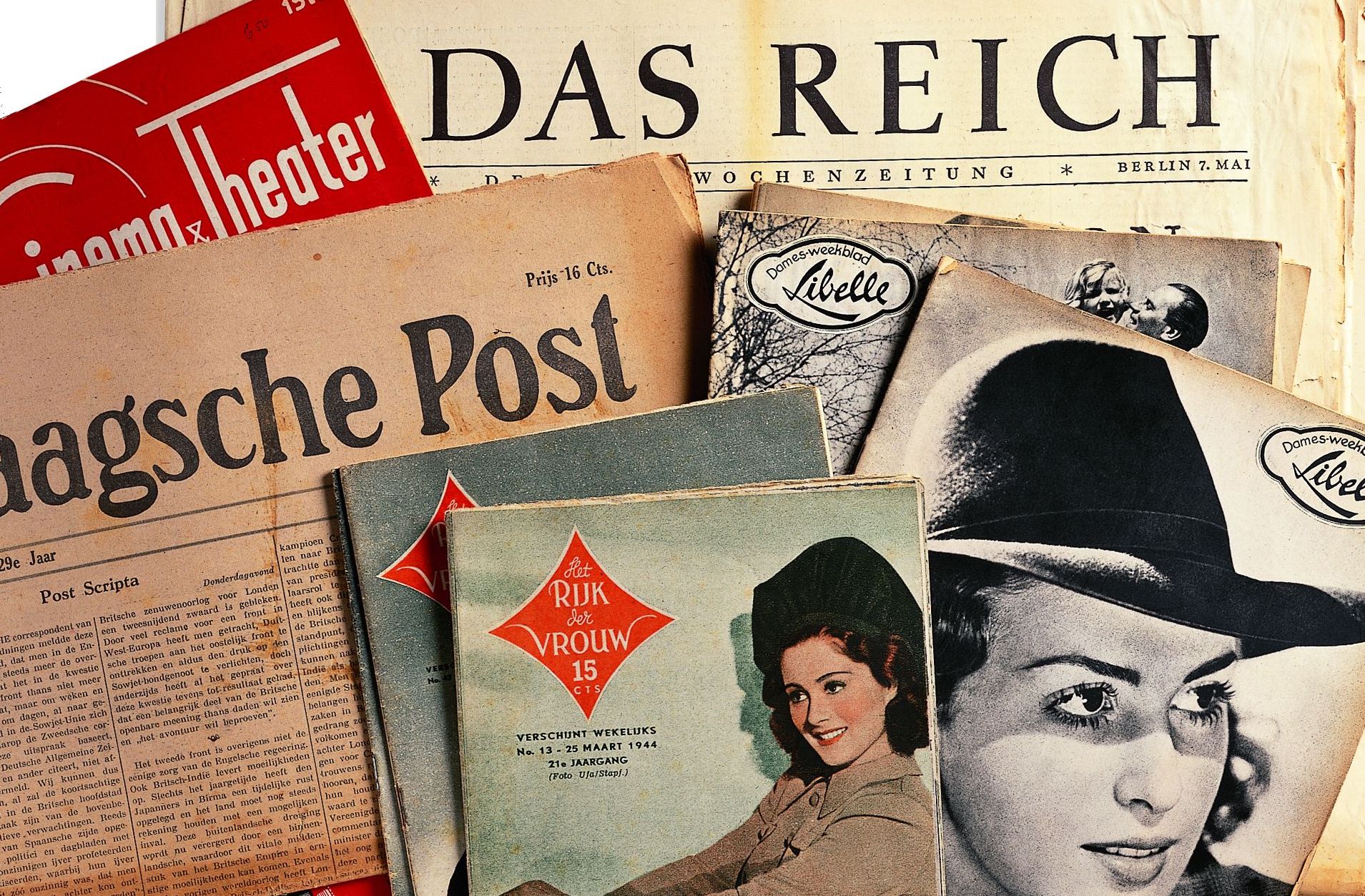Haagsche Post
Weekly opinion magazine, which was read in the Secret Annex.

Diverse tijdschriften
Fotograaf: Allard Bovenberg. Collectie: Anne Frankl Stichting Copyright: AFS rechthebbende
The weekly Haagsche Post was founded in 1914 by Salomon Frederik van Oss (1886-1949) and was aimed at an audience that was too busy to read a newspaper every day, but wanted to be informed. It was printed on pink paper, so it stood out. This formula proved successful: in the years before World War II, the magazine reached a circulation of 60,000 copies.[1]
In 1933, the Haagsche Post had already been banned in Germany because of its anti-national socialist affiliation.[2] During the war, Van Oss, who was Jewish, was forced to step down: the magazine could continue to appear, but was placed under German control.
Victor Kugler brought the Haagsche Post 'every week' for the people in hiding in the spring of 1944.[3] On 29 January 1944, the Haagsche Post published an article entitled 'Will the invasion also come to the Netherlands?'.[4] This article was accompanied by a map depicting the effects inundation would have on the Netherlands. Anne Frank writes in her diary about this map and the uproar it caused, but without mentioning the magazine by name.[5]
After the war, Van Oss returned as editor-in-chief, but failed to regain readership, and after his death in 1949, the magazine was sold. Only after the magazine was sold again in 1952, to G.B.J. Hiltermann, things slowly improved. As of 1967, the Haagse Post was henceforth referred to as HP. In the sixties and seventies numerous celebrities worked for HP: Simon Vinkenoog, Cherry Duyns, Jan Cremer, Ischa Meijer, Armando and many others. During the 1980s, however, HP's circulation quickly went downhill. A merger with the weekly De Tijd saved HP from bankruptcy in 1990: both magazines continued under the name HP/De Tijd.[6]
Footnotes
- ^ Elsbeth Kwant, Marieke van Delft, Reinder Storm (samenst. & red.), Het Tijdschriftenboek, Zwolle: Waanders, 2006, p. 296; Marieke van Delft, Nel van Dijk, Reinder Storm (red.), Magazine! 150 jaar Nederlandse publiekstijdschriften, Zwolle: Waanders, 2006, p. 60-61.
- ^ Hans Mulder, Een grote laars, een plompe voet. Nederland en de Nazi’s in spotprenten en karikatuur 1933 – 1945, Amsterdam/Brussel: Thomas Rap, 1985, p. 33.
- ^ Anne Frank, Diary Version A, 18 April 1944, in: The Collected Works.
- ^ 'Komt de invasie ook in Nederland?', Haagsche Post, 29 januari 1944 (via Delpher). De jaargangen 1940-1945 van Haagsche Post zijn integraal te raadplegen op Delpher, de website van de Koninklijke Bibliotheek, met gedigitaliseerde historische Nederlandse kranten, boeken, tijdschriften en radiobulletins uit bibliotheken, musea en andere erfgoedinstellingen.
- ^ Anne Frank, Diary Version A, 3 February 1944, in: The Collected Works, transl. from the Dutch by Susan Massotty, London [etc.]: Bloomsbury Continuum, 2019.
- ^ Wikipedia: Haagse Post.